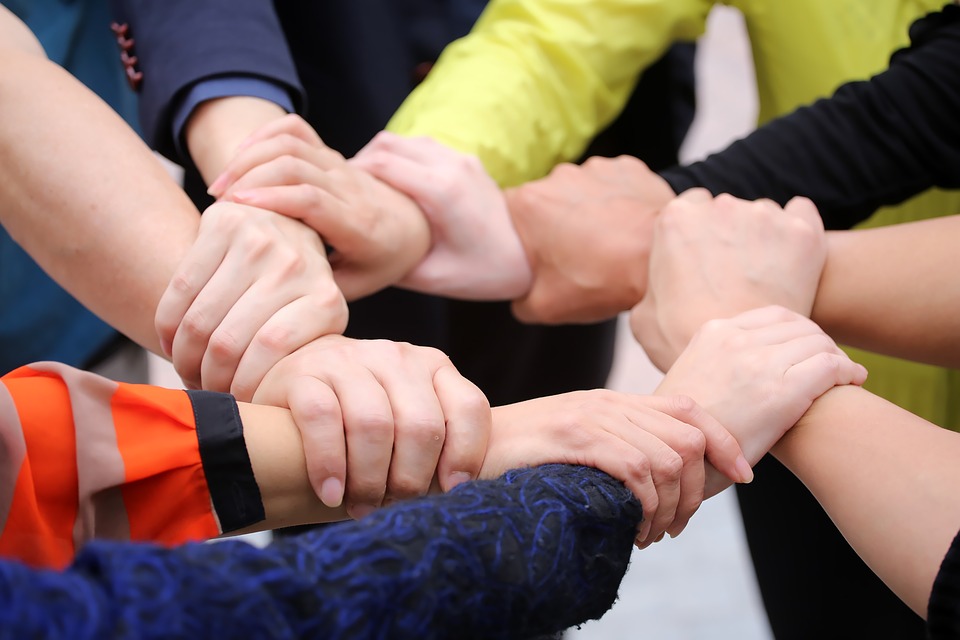
“Moshe assembled the entire assembly of Bnei Yisroel”(35:1)
In Parshas Terumah, Tetzaveh, and Ki Sisa the Torah relates Hashem’s instructions to Moshe concerning the construction of the Mishkan. In Parshas Vayakheil and Pekuday Moshe relays these instructions to Bnei Yisroel. Why did the instructions that Moshe gave to Bnei Yisroel require assembling them all together? We do not find in Hashem’s directives to Moshe that it was necessary to assemble Bnei Yisroel, nor do we see any of the other commandments given by Moshe in this manner.
Moshe’s instructions to Bnei Yisroel were given immediately after he descended Har Sinai with the second Tablets. Although Hashem had forgiven Bnei Yisroel, as signified by His giving the second Tablets, Moshe saw the need to correct a deficiency that had resulted from the sin of the Golden Calf. Idol worship stems from a need within a person to separate himself from Hashem so that he may sense his independence. This need for independence also results in a lack of unity amongst the populace, for unity can only be achieved if each individual views himself as part of a community in which every person is interdependent upon his fellow man. If, however, man strives to feel his independence, the sense of unity he feels with his fellow man can be destroyed.On a deeper level, we are truly one because we come from the same source. If a person attempts to separate himself from this source he separates from his fellow man as well.Therefore, Moshe gathered everyone together as an eidah, an assembled community, to undo the effects of disunity created by the sin of the Golden Calf.1
1.See Ohr Hachaim who explains that the precept of Shabbos is recorded at this juncture for Shabbos is the antidote to idol worship
Separate Identities
“See, Hashem has proclaimed by name Betzalel son of Uri son of Chur, of the tribe of Yehudah” (35:30)
When Betzalel was only thirteen years old, he was designated by Hashem to supervise the construction of the Mishkan and its vessels.1 The Midrash questions the need to trace Betzalel’s genealogy back to his grandfather Chur. The Midrash offers the following explanation: When Bnei Yisroel entertained the idea of constructing the Golden Calf, Chur resisted and consequently was killed. Hashem swore that He would reward Chur’s descendants for his act of mesiras nefesh – selfless dedication. Chur’s situation can compared to an army that rebels against the king, and the king’s chief of staff is killed while attempting to defend the king. After dealing with the insurrection, the king swears to elevate the chief of staff’s children to the esteemed positions that their dead father held.2 Why does Hashem wait until the generation of Betzalel, Chur’s grandson to repay Chur for his great sanctification of Hashem’s name, instead of imbuing Chur’s son Uri with these talents?
Every child is comprised of a part which he has received from his parents and a part which he has developed on his own. We all struggle to find our own identity, separate from that of our parents, and therefore, we do not appreciate going through life being told that we are exactly like our parents. If Uri would have been given all of his talents in his father’s merit, his own identity would have been diminished. Therefore, Hashem skipped one generation, waiting to imbue Betzalel with unique talents inthe merit of Chur. A person would rather hear that he is exactly like his grandfather than hear that he is exactly like his father.
1. Sanhedrin 69b 2.Tanchuma Vayakheil Ch.2
Enough is not always Enough
“The work done was sufficient and there was extra”(36:7)
When Moshe saw that enough materials and labor had been provided for the Mishkan, he called a halt to the contributions. The verse states that “there was enough…there was extra”. The Ohr Hachaim points out that these two expressions seem to contradict each other; if there was enough, then how could there be extra? Furthermore, why is there a need to mention the surplus? The Ohr Hachaim suggests that in order to prevent those who brought the surplus from being embarrassed by having their donations returned, a miracle occurred and the surplus was incorporated into the Mishkan and its vessels.1
Perhaps an alternative interpretation can be offered. In the Zemiros, the liturgical poetry recited at the Shabbos meal, we find the following phrase: “savanu vehosarnu”, which means “We have eaten our fill and left over.”2 It would seem that it is only necessary to attest to the fact that, as required by the mitzva of Oneg Shabbos – delighting in the Shabbos, we have eaten our fill. Why is it necessary to say that we have left over?
If there is nothing left over, then it is possible that we did not eat our fill, rather we finished all that there was and still are not satiated. Having food left over demonstrates that we have indeed eaten our fill.
Similarly, regarding the Mishkan, even though most of the dimensions of the structure and vessels were precise measurements, there were some dimensions that were left up to Bnei Yisroel’s discretion; they were allowed to decide what would be most appropriate. For example, the Torah relates only the height, length, and width of the Kapores – Ark cover, but not its thickness. Betzalel determined its thickness based upon aesthetic appeal. If the Torah had not recorded that there was a surplus, one could think that there were situations where Betzalel was required to skimp, failing to produce the most aesthetically appealing product possible. Therefore, the Torah records that there was a surplus to teach us that there were sufficient materials to construct the Mishkan and the vessels in the best possible way, and no corners had to be cut.
1.36:7 2.Tzur Mishelo


